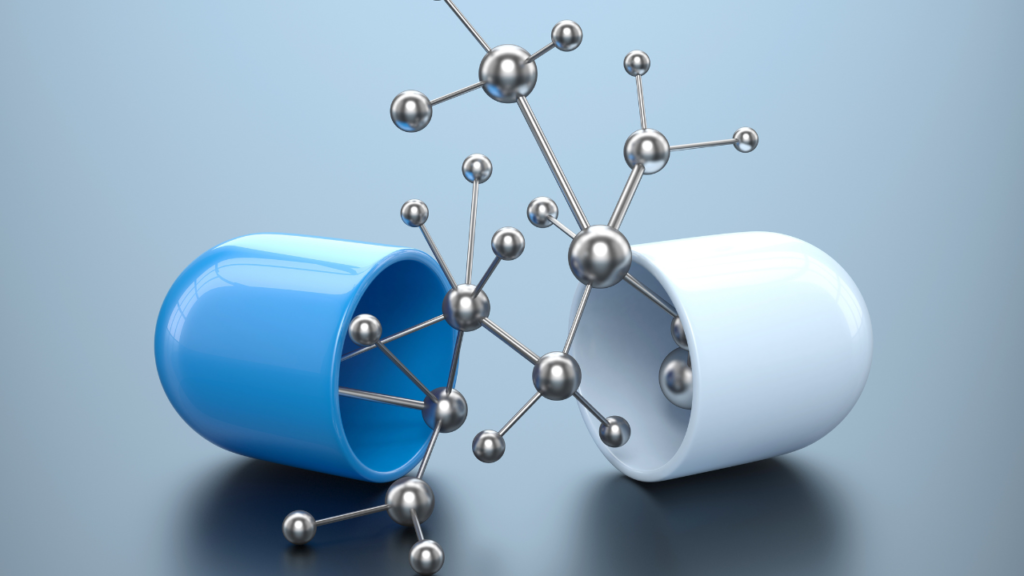|
Getting your Trinity Audio player ready...
|
Nanotechnology in Medicine – Nanotechnology is a rapidly emerging field that involves the manipulation and control of matter at the nanoscale, which is one billionth of a meter. This technology has the potential to revolutionize various industries, including medicine. In the field of medicine, nanotechnology can be used to improve drug delivery, diagnostic techniques, and medical treatments.
Nanoparticles and Their Role in Medicine

Nanoparticles are tiny particles that are between 1 and 100 nanometers in size. These particles have unique physical, chemical, and biological properties due to their small size and large surface area. These properties make nanoparticles attractive for use in medicine.
One of the main ways that nanoparticles are being used in medicine is for drug delivery. Traditional drug delivery methods, such as oral or injectable medications, often have poor bioavailability and can have negative side effects.
Nanoparticles can be designed to target specific cells or tissues in the body, which can increase the effectiveness of the drug and reduce side effects. For example, nanoparticles can be coated with a targeting agent that allows them to selectively bind to cancer cells. This can increase the concentration of the drug at the site of the cancer, leading to more effective treatment.
Nanoparticles are also being used to improve diagnostic techniques in medicine. For example, nanoparticles can be used to create contrast agents for imaging techniques such as magnetic resonance imaging (MRI) and computed tomography (CT). These contrast agents can help to improve the accuracy and sensitivity of these diagnostic techniques, leading to more accurate diagnoses.
Applications of Nanotechnology in Medicine

There are many potential applications of nanotechnology in medicine, including:
- Cancer treatment: Nanotechnology is being used to develop new cancer treatments that are more targeted and effective. For example, nanoparticles can be used to deliver chemotherapy drugs directly to cancer cells, which can increase the effectiveness of the treatment and reduce side effects.
- Drug delivery: As mentioned previously, nanoparticles can be used to improve drug delivery in the body. This can help to increase the effectiveness of medications and reduce side effects.
- Diagnostics: Nanotechnology can be used to improve diagnostic techniques, such as imaging methods, which can help to improve the accuracy and sensitivity of these techniques.
- Tissue engineering: Nanotechnology can be used to create scaffolds for tissue engineering, which can help to regenerate damaged or diseased tissues in the body.
- Wound healing: Nanoparticles can be used to improve wound healing by promoting the growth of new tissue and reducing inflammation.
- Biomaterials: Nanotechnology can be used to create new biomaterials for use in medical devices, such as stents and implants. These materials can be designed to be biocompatible and have specific properties, such as being resistant to infection or promoting tissue growth.
Challenges and Limitations of Nanotechnology in Medicine

While nanotechnology has the potential to revolutionize medicine, there are also challenges and limitations that need to be considered.
One of the main challenges is the lack of regulation of nanomaterials. There are currently no specific regulations for nanomaterials in the United States, which can make it difficult to ensure the safety and effectiveness of these materials.
Another challenge is the potential for unintended consequences of using nanomaterials in the body. There is a lack of understanding about the potential long-term effects of these materials on human health.
Finally, the cost of developing and producing nanomaterials can be high, which can limit their widespread use in medicine.
Conclusion on Nanotechnology in Medicine

Nanotechnology has the potential to revolutionize medicine by improving drug delivery, diagnostic techniques, and medical treatments. However, there are also challenges and limitations to consider, such as the lack of regulation, potential unintended consequences, and high cost of development and production. Despite these challenges, the use of nanotechnology in medicine is expected to continue to grow in the coming years as researchers continue to explore the potential of this technology.



